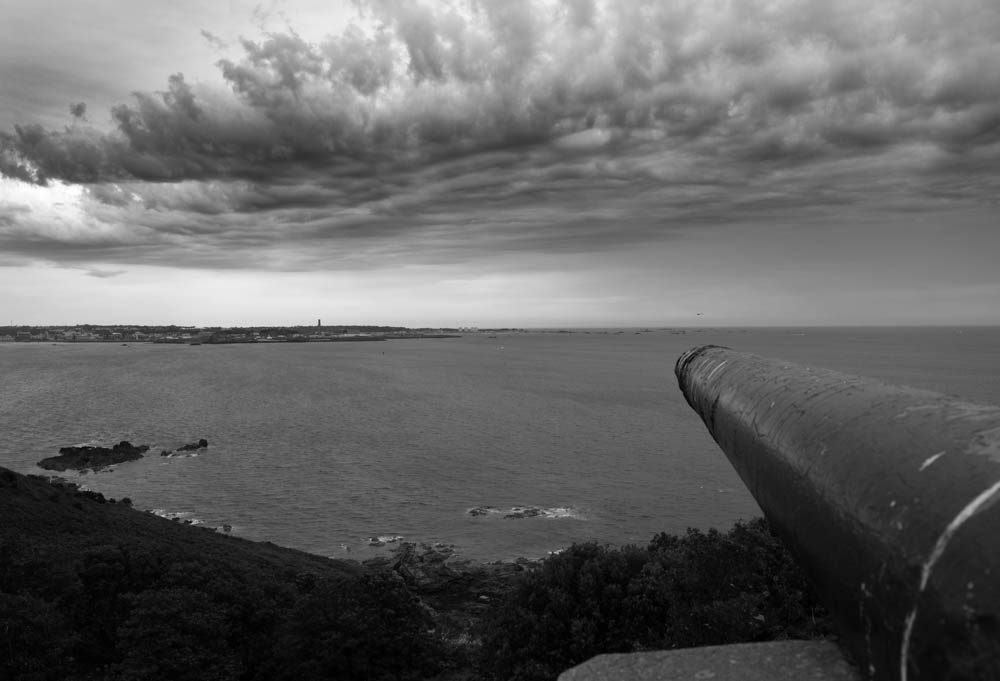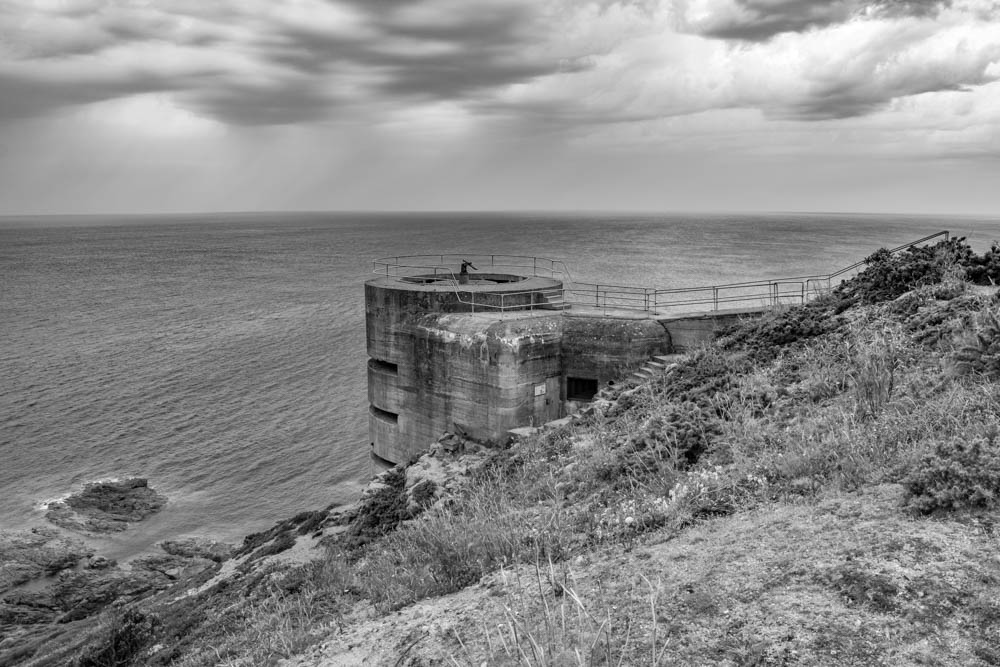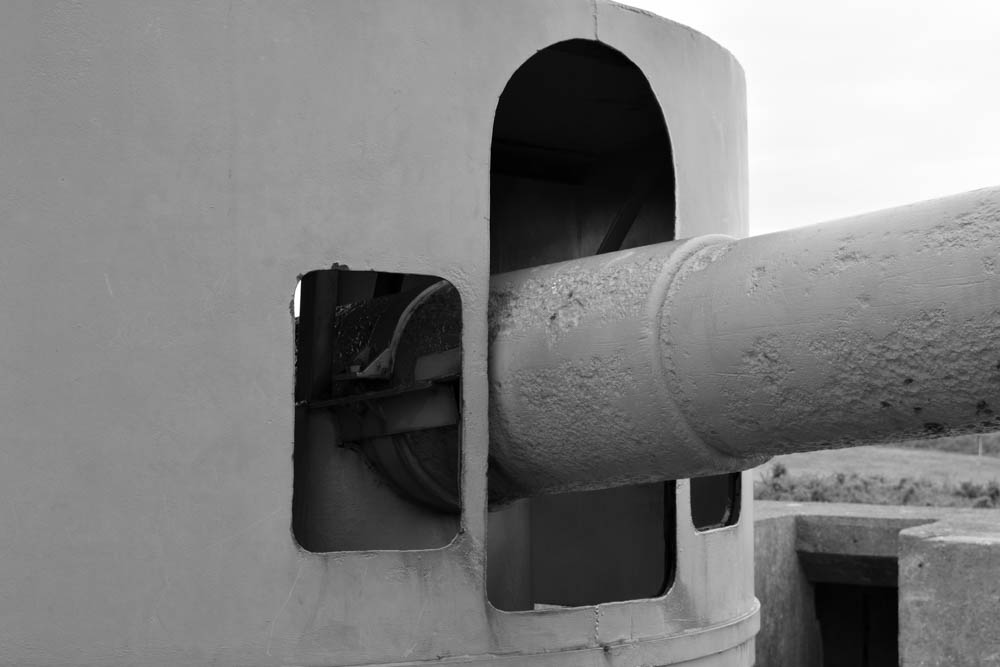Visit:
Battery Lothringen is the largest German battery on the Island with a total of four gun positions. Like its namesake, SMS Lothringen, the battery was set up similarly to that of a naval battle ship and run by the invading navy unit. The first part of the battery was completed in 1941 and continued to function until liberation on May 9th 1945.
After liberation the people of Jersey wanted all trace of Nazi rule removed or covered up. This included Battery Lothringen. In March 1946, Lothringen’s four guns and anti-aircraft guns were removed by the British Army and disposed of over the cliffs at Les Landes. These guns would later be recovered, restored and returned to the battery. Much of the bunker systems were also filled in with dirt, but were again later dug up and restored.
Tuesday 18th June 2019:
The visit to Battery Lothringen could be considered a complete success if you completely ignore that fact that it rained nearly the entire time we were there.
When were arrived at the battery we were introduced to Tony Pike of CIOS. Tony explained the history behind Lothringen and talked us through the four gun positions and the purpose of each of the bunker structures on the site. We were then given the change to wander around the site and conduct our photo shoot before meeting up in the car park to then head into one of the bunkers. Once inside we were again given free reign and allowed to look around, read the information panels and take more photographs. After lunch, it was still raining, so we requested that the coach come earlier to take us back to school.
Shoot:
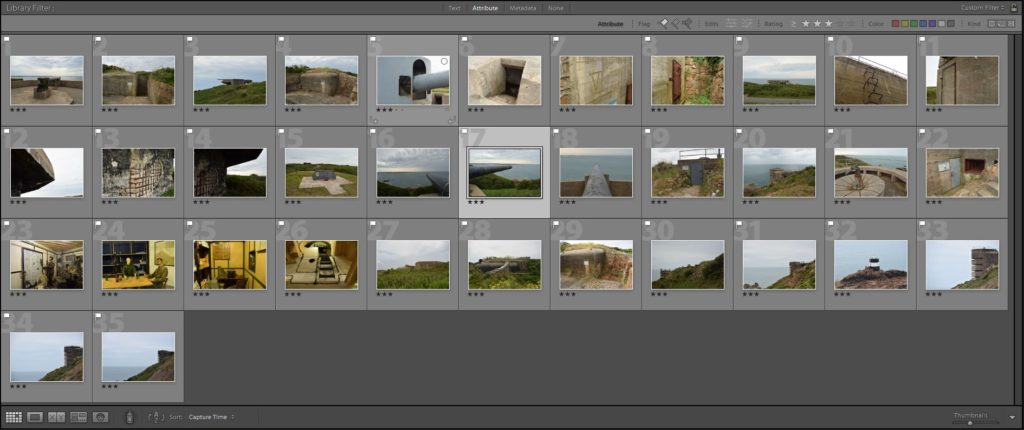
After importing all my images into Lightroom, I began to look through my image to decide which ones were the best. To start i picked images that looked and good. I rejected images that were out of focus, over/under exposed or that I simply didn’t like.
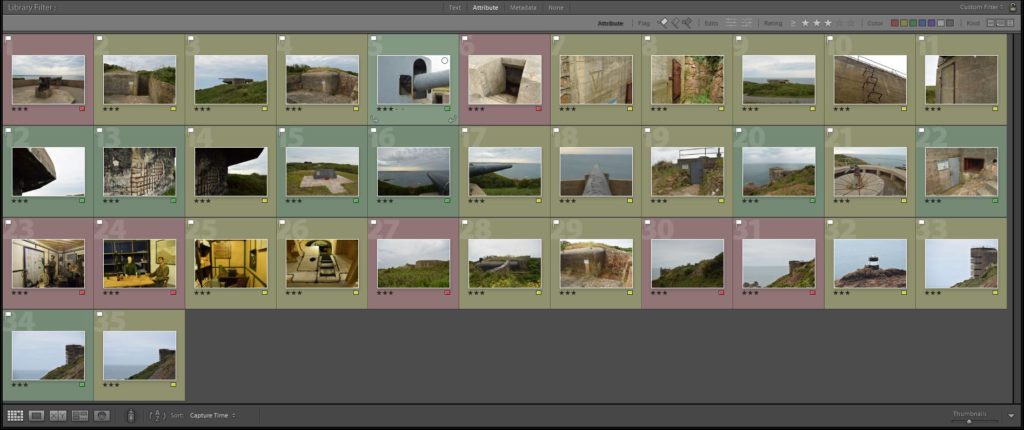
YELLOW: Maybe/Needs editing
GREEN: Usable Image
Next, I took a closer look at my images and selected images that would be most useful for the ‘Bunker Archaeology’ project. I condensed my selection down to 8 images that I definitely wanted to try and use.
Images:
To capture my images I used an aperture of F/8, an ISO of 200 and a shutter speed of 1/80secs. I made all the images black and white in order to to give the images a more dramatic look and to fit with the colourless images of the 1940s.
